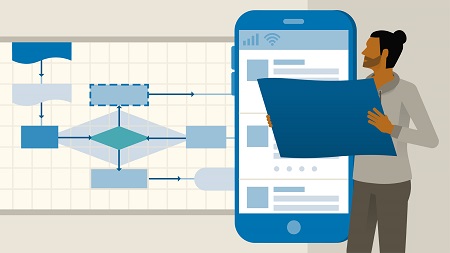
English | MP4 | AVC 1280×720 | AAC 48KHz 2ch | 0h 40m | 77 MB
Before UX designers can move on to anything else, they must think holistically about the structure of their project, determining how every element—no matter how small—fits into the overall experience. In this course, Diane Cronenwett delves into the role of structure in interaction design. Diane explains how the process of defining a project’s structure helps designers see the big picture (and organize project elements in a more thoughtful way). She goes over when to use flow diagrams in UX design projects, as well as how to create information architecture deliverables. Plus, learn how to design page-level structure, organize projects with a grid, determine the right interface elements needed put everything together, and more.
Topics include:
- The role of information architecture in UX design
- Navigation labels and content inventory
- Information density in interface design
- Setting up and using a grid system
- Establishing the goals of a site
- Creating flow diagrams
- Iterating through multiple layouts
Table of Contents
Introduction
1 Structure is the backbone of UX
Understanding Structure
2 Understanding the big picture
3 Defining different structural flows
4 Role of information architecture
5 Defining information architecture
6 Navigation labels and content inventory
Designing Page-Level Structure
7 Information scent and hierarchy
8 Overview of page-level elements
9 Overview of information density
10 Organizing with a grid
Interface Design Considerations
11 Sitemap and flow diagram
12 Establishing the goals of the site
13 Layout, hierarchy, and grouping
14 Headings and content
15 Iterating through layouts
16 Determining the right interface elements to put it all together
Conclusion
17 Next steps
Resolve the captcha to access the links!